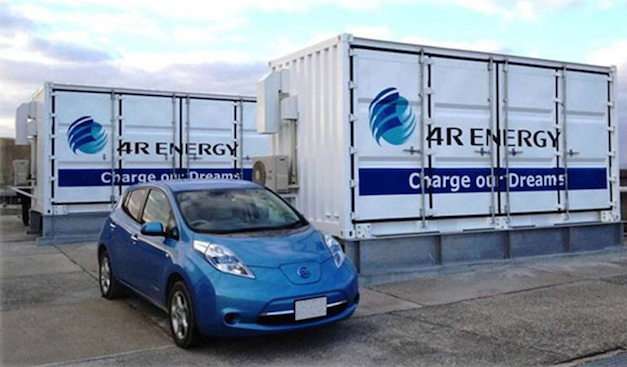EU Project Aims To Switch Data Centres Over To Car Batteries

The GreenDataNet project wants Europe’s data centres to use second-hand car batteries to make the electric grid run more smartly
A €2.9 million project aims to make Europe’s data centres greener by moving them onto renewable energy and trimming their power usage. It also includes a novel idea – power from second hand electric car batteries.
Electric cars store energy to drive with – but those batteries could have a second life trimming the peaks of energy demand at data centres and other premises, according to Nissan, a member of the GreenDataNet consortium, which was launched in Lausanne, Switzerland last week.
The car battery idea is just one of a set of initiatives from the project which includes Credit Suisse and two academic institutes and is led by power management firm Eaton.
 Charging to the future
Charging to the future
“Affordable and reliable batteries could have a second life in data centres and in the home, starting around 2020,” Nissan’s director for corporate planning, Redmer van der Meer told TechWeek at the launch of GreenDataNet.
Electric cars still have a tiny share of Europe’s car market, but each one holds a battery that can deliver 24kWh of energy. At the end of its life, that battery could be added to a big stack at a data centre, to provide back-up and also power that could smooth the peaks of demand, reducing the data centre’s load on the electric grid.
Van der Meer reckons an electric car will have a lifetime of around 14 years, after which time the battery’s performance will have degraded, but it will still hold around 18kWh. If electric cars take a significant share of Europe’s vehicle market, then there will be a sizeable number of battery modules available – though it will take hundreds of them to power a data centre for any length of time.
Nissan has already set up a system using second-hand car batteries from its Leaf electric cars, at its Osaka plant in Japan, and offers a system called “Leaf 2 Home” in which a car battery installed at a Leaf owner’s home smooths the demand cycles of both car and house.
GreenDataNet
The GreenDataNet consortium has €2.9 million of European Commission funding, and a brief to work out how to make Europe’s data centres more efficient by integrating them into the smart electricity grid as well as increasing their efficiency.
Europe’s data centres tend to be smaller than those in the US and elsewhere, and are in more urban areas, which can limit the options for increasing their efficiency. However, the fact that they are close to other energy users and sources of power means they can be integrated into the grid and help with the crucial problem of matching supply and demand.
Renewable energy sources are intermittent and unreliable, while demand also fluctuates wildly. Moves to make data centres more efficient have actually made matters worse, as they now reduce their power demand when usage is low, increasing the fluctuation of loads.
 “Renewable production gyrates wildly, and traditional generation is suffering,” said Cyrille Brisson, EMEA vice president for power quality at Eaton. “Data centres used to provide a constant base load for power stations,” Brisson told us. “Now this load is increasingly volatile as their energy consumption becomes more proportional to the IT services actually consumed.”
“Renewable production gyrates wildly, and traditional generation is suffering,” said Cyrille Brisson, EMEA vice president for power quality at Eaton. “Data centres used to provide a constant base load for power stations,” Brisson told us. “Now this load is increasingly volatile as their energy consumption becomes more proportional to the IT services actually consumed.”
The project is therefore working on a system which uses buffers and storage to shave the spikes of demand, and this is where Nissan’s batteries will come in. Brisson told TechWeek that Eaton is also working on an intelligent witching unit, which can work directly with DC power from local generation such as solar power, combining it with the AC electric grid and routing it inwards to the data centre or outwards to the grid depending whether the data centre is a net source or user of electricity at any given moment.
The academic partners are the University of Trento in Italy and Lausanne’s EPFL, which hosts an initiative called EcoCloud that is working on efficiency for data centres from the hardware components up to the software stack.
Credit Suisse is also involved. Previous work with EPFL has helped the bank to reduce its data centre bills, cutting energy use and space. The bank has no plans to adopt second-hard car batteries until the idea has been well-tested, Marcel Ledergerber, Credit Suisse vice president of data centre planning told techWeek.
 Charging to the future
Charging to the future